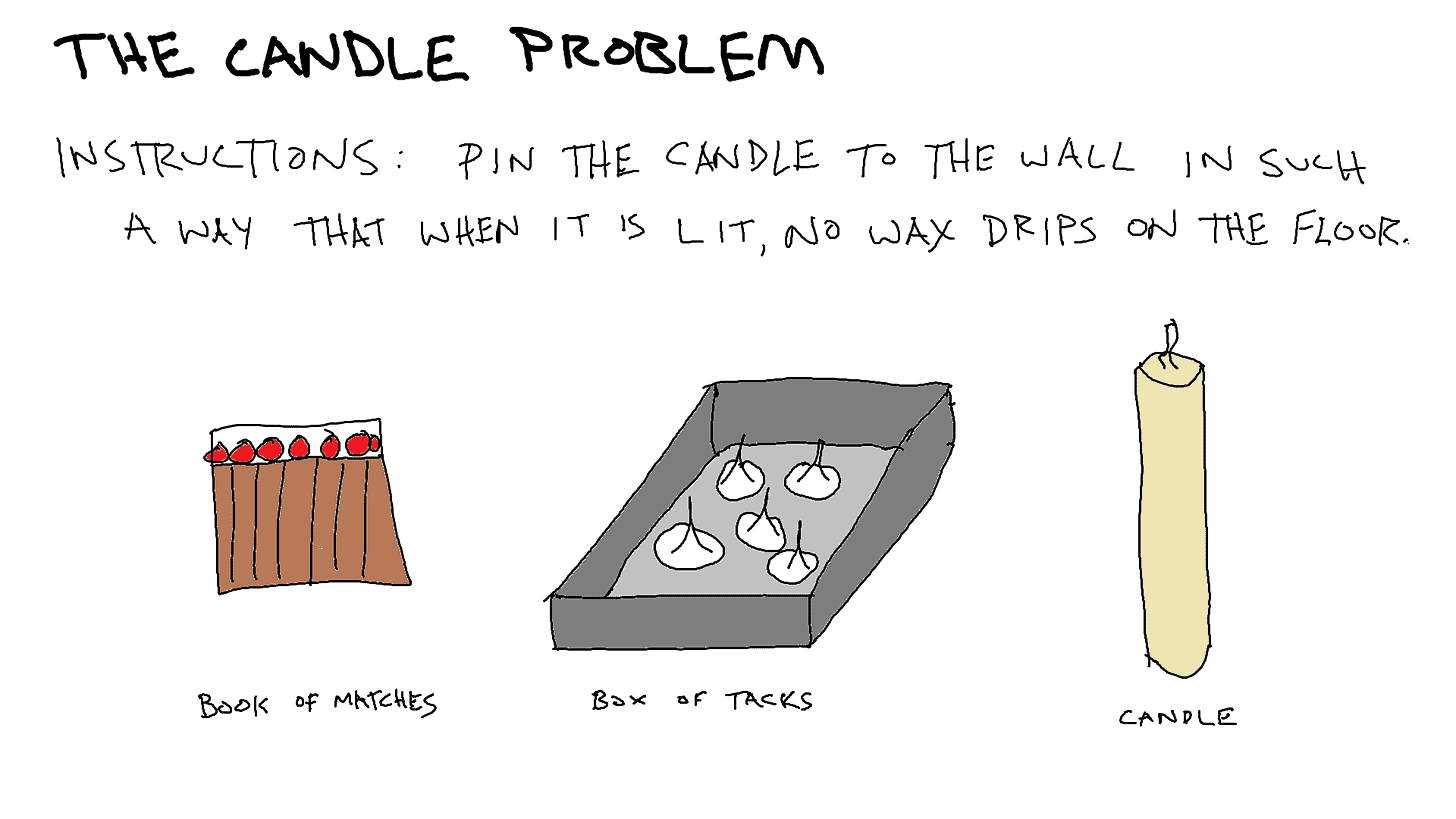In 1945, Gestalt psychologist Karl Duncker developed The Candle Problem.
Presented with this problem, most people had difficulties solving the problem, thinking of a box only in terms of a container for tacks. Putting the tacks outside of the box allowed participants to see the box as an object of use and solve the problem without much difficulties.
The test challenges functional fixedness, a cognitive bias that makes it difficult to use familiar objects in abnormal ways and to overcome it, we need to think outside of the box.
In a 2000 study, Tim German and Margaret Defeyter found the 6- and 7-year-olds show signs of functional fixedness, but 5-year-olds do not:
Rather than taking into account only the proper function of an object, they adopt an agents-goals view of function in which any intentional use of an object can be its function.
In 1962, this test was repeated by Sam Glucksberg, a Canadian professor at Princeton. This time the goal was to see how different types of incenstives affect problem solving. Glucksberg had two groups of people solve the task where one one group was offered a monetary incentive for the fastest time to solve it and the other group was not. As expected, the group with the money prize solved the problem faster, but only the problem where the box was laid out separately from the tacks. The other problem, where the tacks were in the box, on average, took 3.5 minutes longer to solve by the incentivized group. The people in the reward group had their creative side blocked out with the introduction of money.
This fascinating problem had a profound impact on motivation research and the way successful companies and startups attract and retain best employees.



